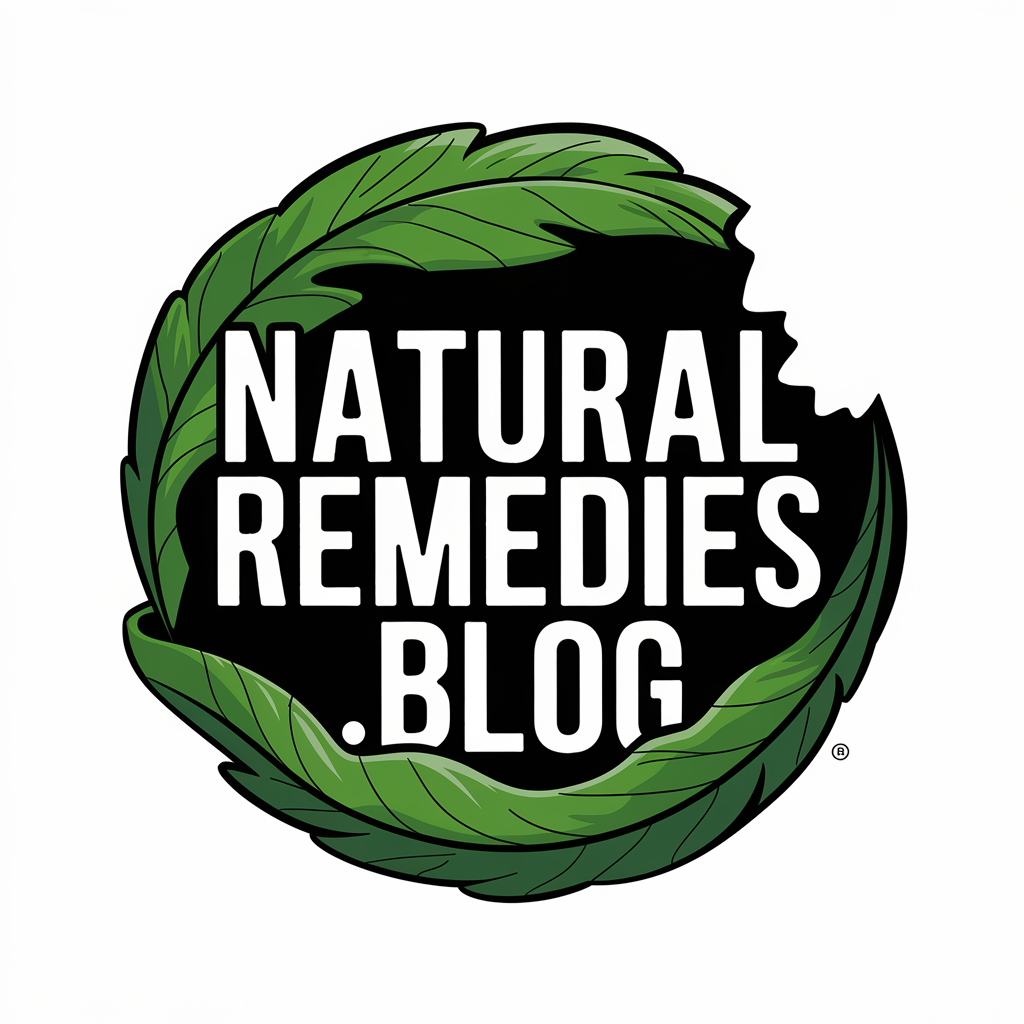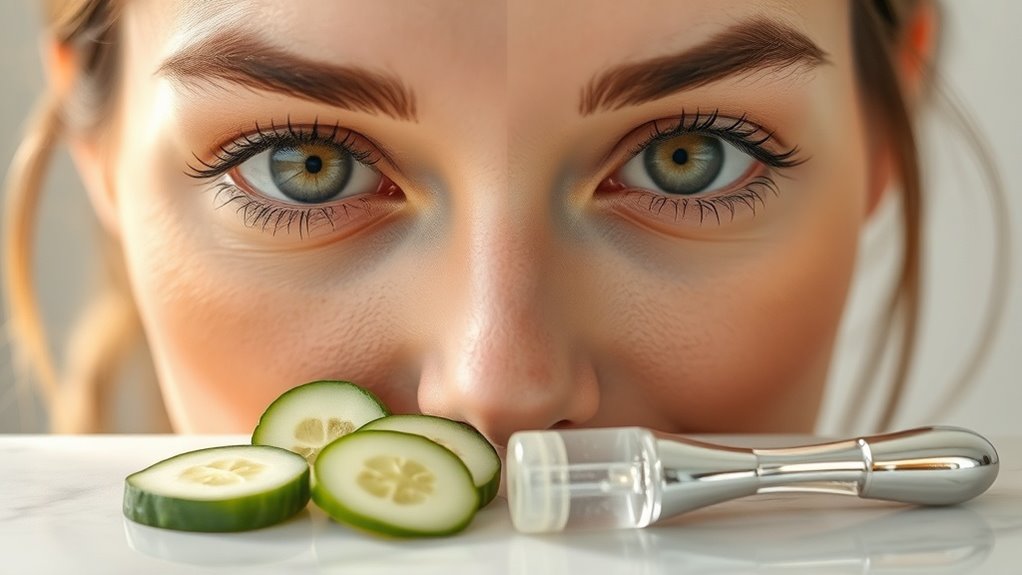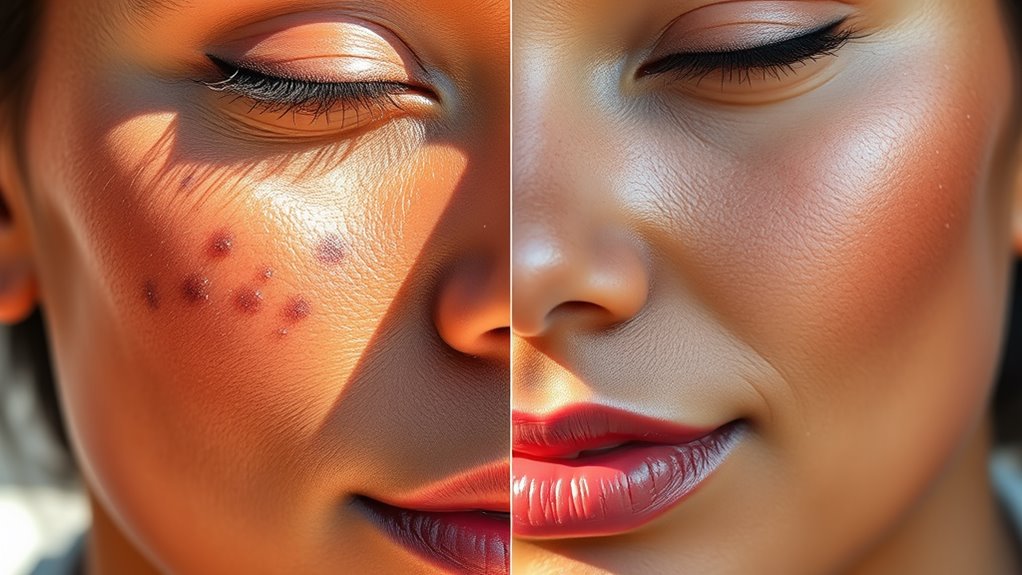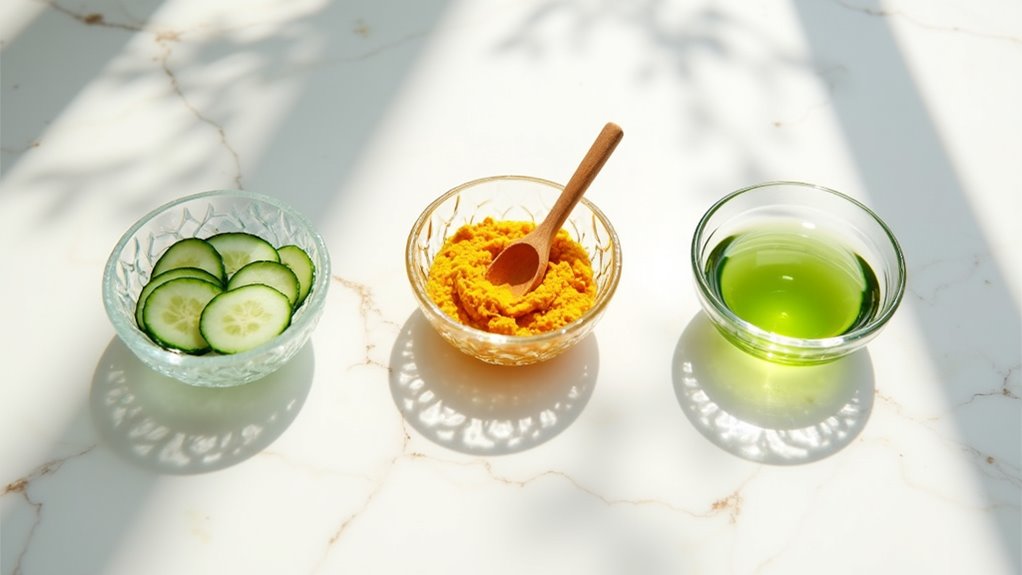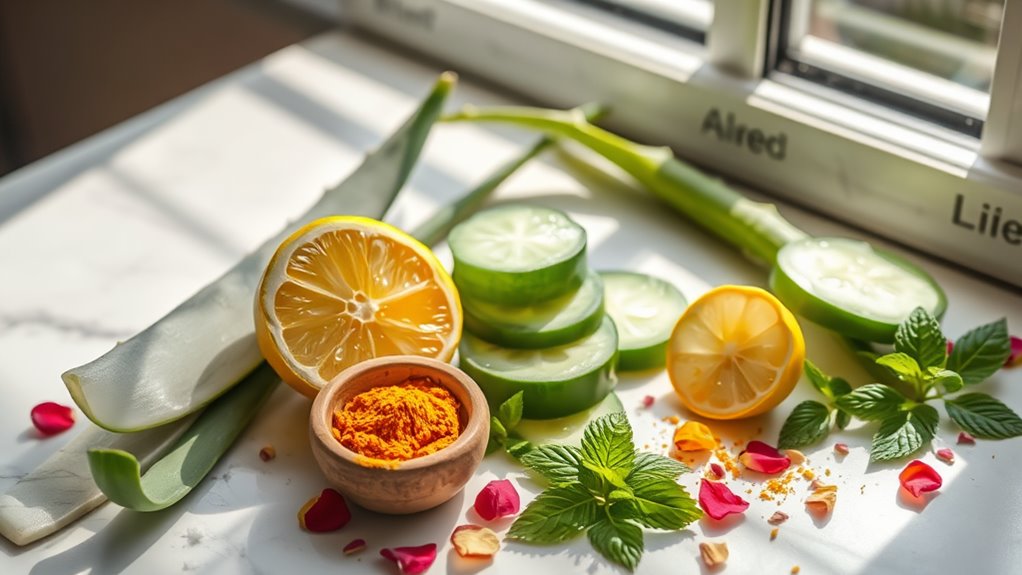Dark Spots Remedies That Brighten Skin Naturally
If you’re struggling with dark spots, you’ll find that nature offers powerful solutions without harsh chemicals. Whether caused by sun damage, hormones, or acne scarring, these stubborn marks can diminish your skin’s natural radiance. While conventional treatments often contain questionable ingredients, botanical extracts and kitchen staples can effectively fade hyperpigmentation and restore your complexion’s brightness. Discover how simple, natural remedies can transform your skin through time-tested methods.
Understanding Dark Spots: Causes and Prevention
While dark spots can appear at any age, they most commonly develop due to excess melanin production in specific areas of the skin.
Sun exposure, hormonal changes, acne scarring, and aging are primary triggers for these hyperpigmented patches. You’ll notice them appearing more frequently on sun-exposed areas like your face, hands, and décolletage.
Before exploring dark spots remedies, it’s important to understand prevention.
Always use broad-spectrum SPF 30+ sunscreen, wear protective clothing, and avoid peak UV hours. Additionally, genetic predisposition can also play a significant role in determining an individual’s likelihood of developing dark spots.
Additionally, treat underlying skin conditions promptly and avoid picking at blemishes, which can lead to post-inflammatory hyperpigmentation.
Natural Ingredients That Target Hyperpigmentation
Nature offers powerful solutions for treating hyperpigmentation through botanically-derived compounds.
These natural ingredients work by inhibiting tyrosinase, the enzyme responsible for melanin production, while promoting cell turnover and protecting against UV damage.
-
Kojic acid from fermented rice effectively lightens dark spots and prevents new ones from forming
-
Vitamin C from citrus fruits neutralizes free radicals and blocks melanin synthesis
-
Licorice root extract contains glabridin, which reduces melanin production and inflammation
-
Niacinamide from B3 vitamins decreases melanin transfer while improving skin barrier function. Additionally, regular checks are vital for early detection of new spots, ensuring your treatment is effective.
DIY Spot Treatment Recipes for Brighter Skin
Creating effective dark spot treatments at home requires careful selection and combination of natural ingredients.
Mix 1 tablespoon of fresh lemon juice with 1 teaspoon of honey and apply directly to dark spots using a cotton swab.
For a potent brightening mask, combine 2 tablespoons of yogurt with 1 teaspoon of turmeric powder.
You’ll find powerful results by mixing 1 tablespoon of aloe vera gel with 3 drops of rosehip oil. Apply this blend nightly after cleansing.
Another effective option combines 1 tablespoon of potato juice with ½ teaspoon of green tea extract for targeted spot treatment.
Incorporating antioxidants for skin health into your diet can also enhance the effectiveness of these treatments.
Essential Tips for Daily Dark Spot Care
Since dark spots require consistent attention, you’ll need to establish a targeted daily care routine that prioritizes both treatment and prevention.
Maintaining skin health and addressing hyperpigmentation demands specific practices that protect and repair your skin’s appearance.
-
Apply broad-spectrum SPF 30+ sunscreen daily, even on cloudy days, to prevent dark spots from worsening.
-
Use gentle exfoliants containing glycolic or lactic acid twice weekly to remove dead skin cells.
-
Incorporate vitamin C serum in your morning routine to brighten skin and fade discoloration.
-
Layer retinol products at night to accelerate cell turnover and even skin tone.
Additionally, ensure that your skincare products maintain skin’s natural pH to protect the skin barrier effectively.
Best Practices for Long-Term Skin Brightening Results
To achieve lasting skin brightening results, you’ll need to implement an extensive strategy that extends beyond daily treatments.
Combine topical treatments containing kojic acid, vitamin C, and niacinamide with professional procedures like chemical peels or laser therapy. Protect your skin with broad-spectrum SPF 30+ sunscreen daily, even on cloudy days.
Monitor your progress by taking monthly photos in consistent lighting. Maintain a balanced diet rich in antioxidants, stay hydrated, and get adequate sleep.
If you don’t see improvement after three months, consult a dermatologist to adjust your treatment plan or explore prescription-strength options.
